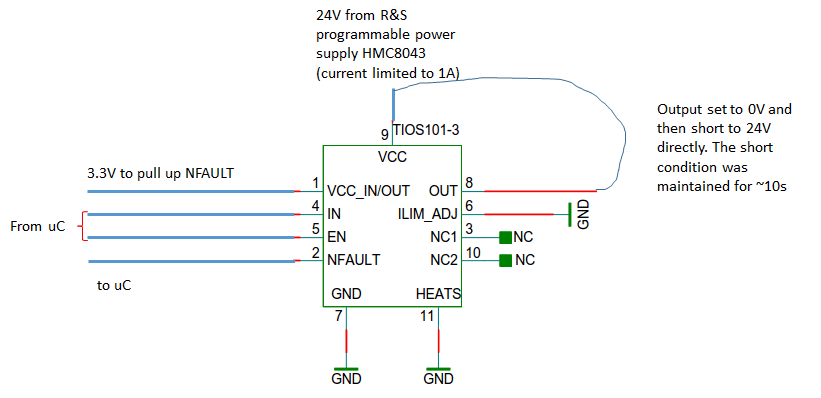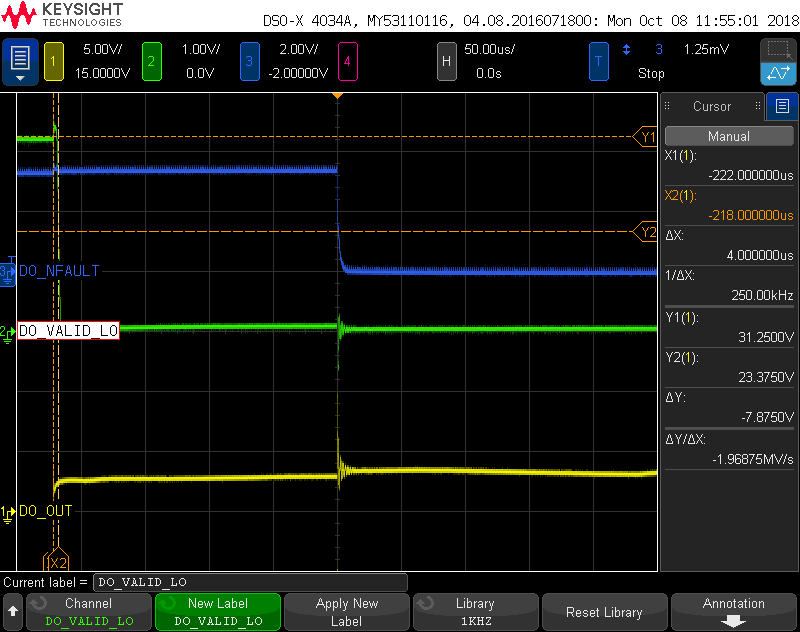hi,
One of my customer is dong short circuit test for TIOS101-3 using the below process and found device damaged. Any clue or advice how to cure?
1. Drive output low --> uC controls the input of TIOS101-3. --> Voltage 3.3V
2. Short output with 24V
3. Keep the short condition continuously for more than 5-10 sec. (FAULT pin shows an error according to the datasheet --> Expected behavior.).
4. remove short
5. Observe if damaged --> Output stage damaged. Output impedance is 130 Ohm after measurement --> Unexpected behavior
After step 5, the IC is continuously in short circuit mode because output stage is damaged.
I did the test on two chips on my PCB and unfortunately both are damaged.
I_LIM_ADJ pin is shorted to Ground.
Thx in advance.
Best regards,
kpk



